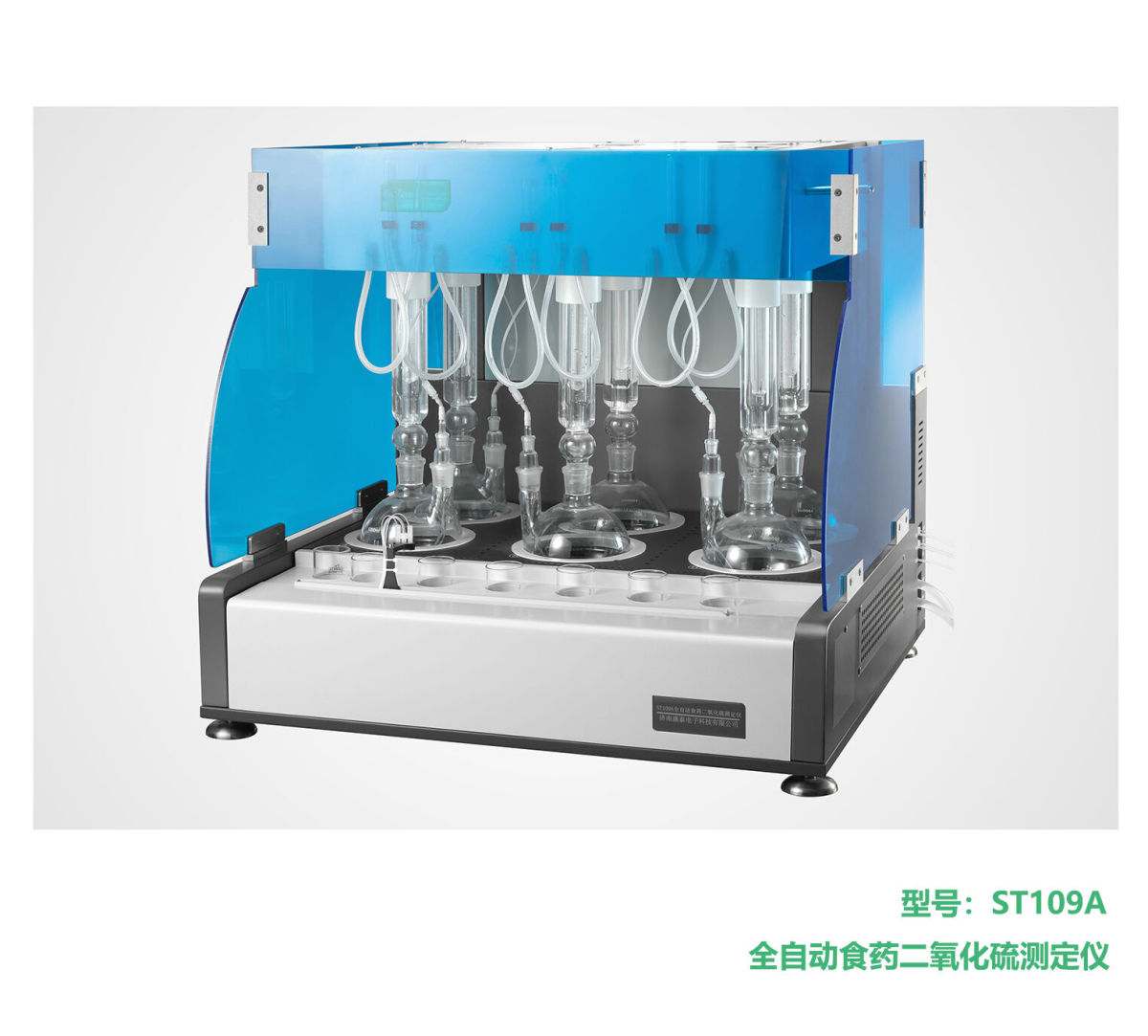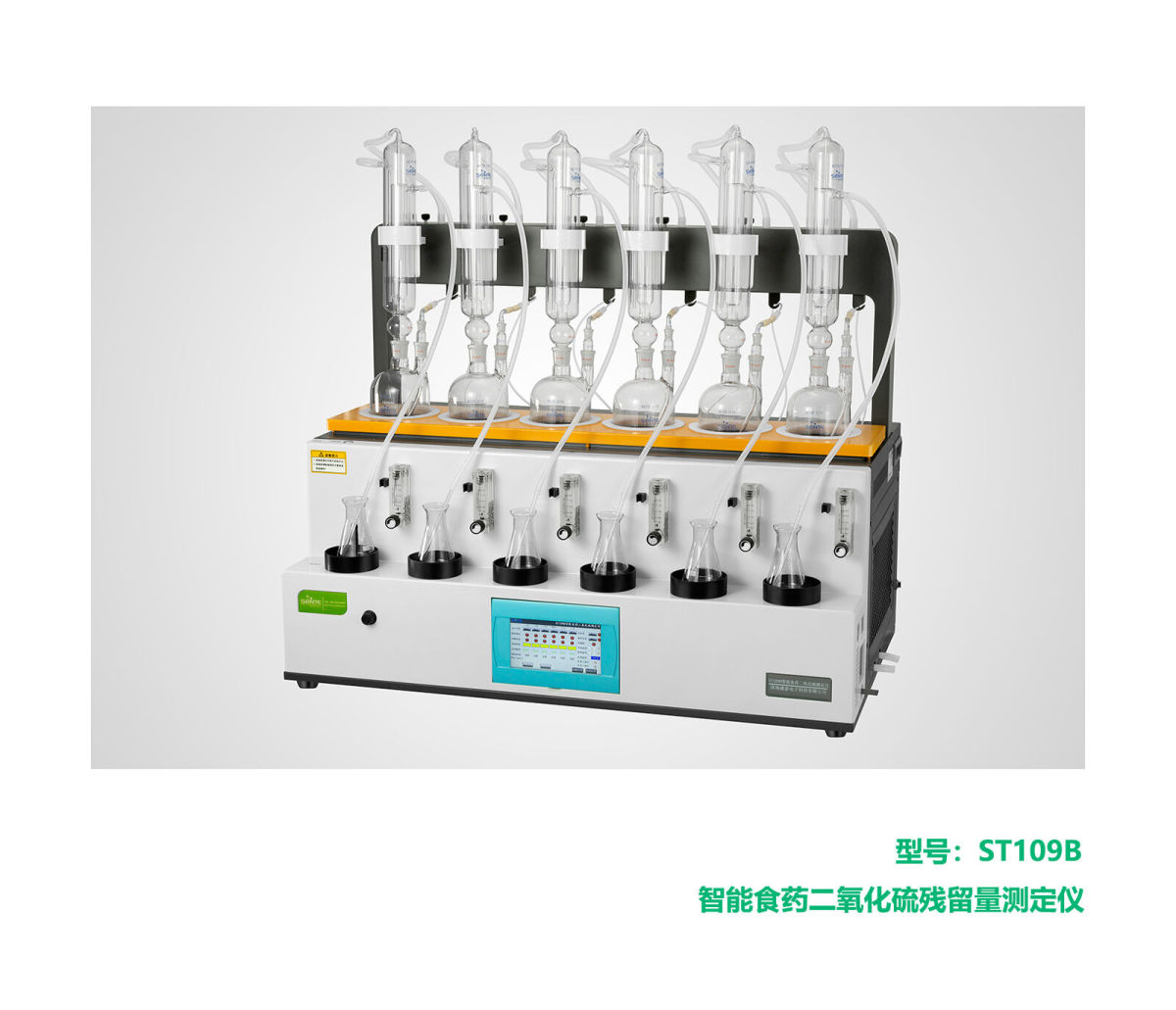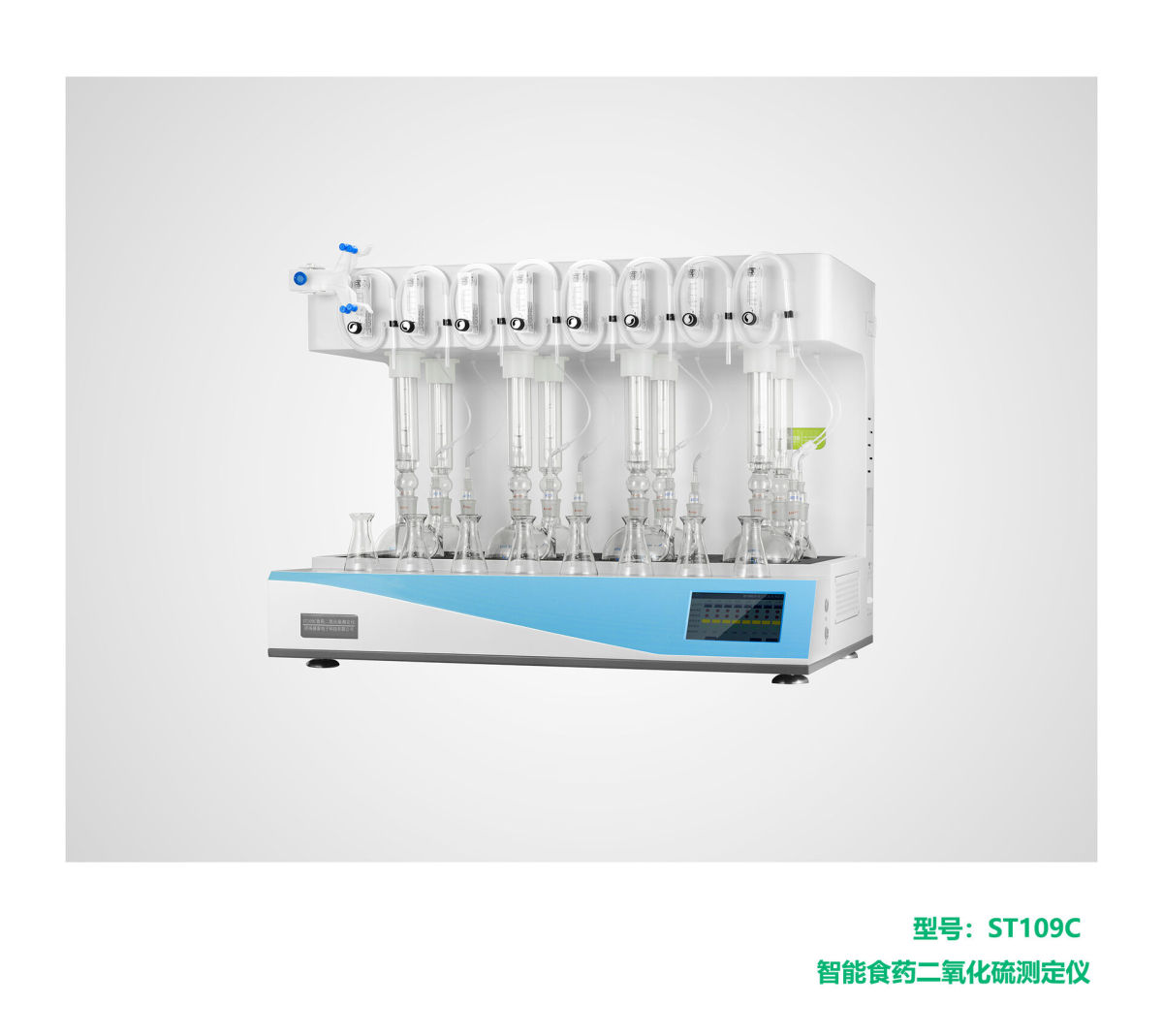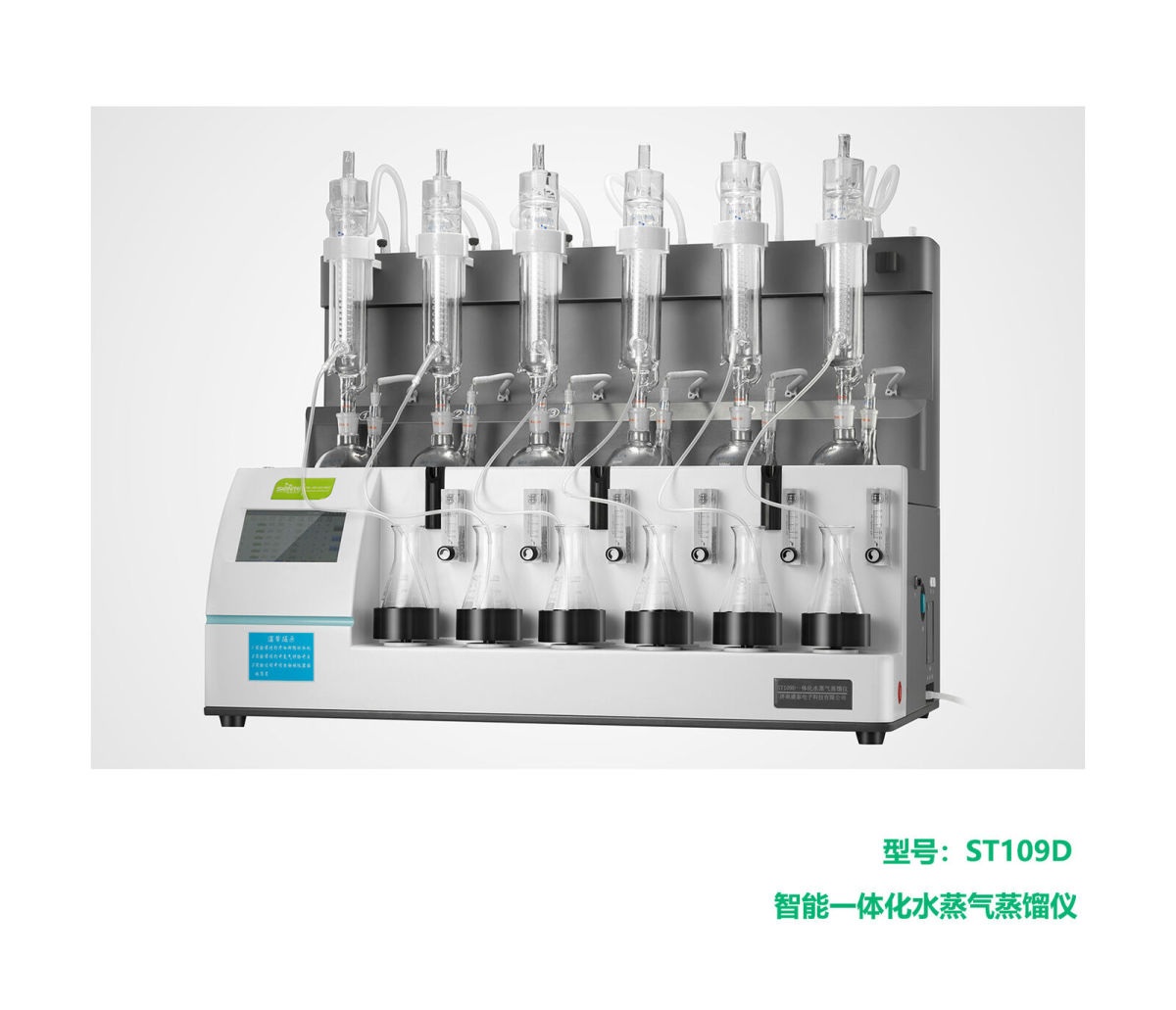On July 28 , 2022 , the National Health Commission promulgated the new national standard for food sulfur dioxide " GB5009.34-2022 ", which is scheduled to be implemented on December 30, 2022. Compared with the original GB 5009.34-2016 , the new national standard has the following main changes:
( 1 ) The original titration method was revised to acid-base titration method.
( 2 ) Add spectrophotometry and ion chromatography.
The first method is acid-base titration. The pretreatment uses nitrogen distillation. After the sample is acidified, sulfite and other substances release sulfur dioxide under heating conditions. The sulfur dioxide is absorbed by hydrogen peroxide solution and oxidized into sulfate ions. The sodium hydroxide standard solution is used for titration, and the sulfur dioxide content is calculated based on the consumption.
The second method is spectrophotometry. The sample is immersed in formaldehyde buffered absorption solution or distilled with acid and nitrogen to release the sulfur dioxide, which is absorbed by the formaldehyde solution to form a stable hydroxymethylsulfonic acid addition compound. Under acidic conditions, it reacts with pararosaniline hydrochloride to form a blue-purple complex. The concentration of sulfur dioxide is obtained by measuring the absorbance of the complex.
The third method is ion chromatography. The pretreatment is to convert the sulfite series substances in the sample into sulfur dioxide after acid treatment. The sulfite is distilled out with water vapor using nitrogen - water vapor distillation method, absorbed by hydrogen peroxide and oxidized into sulfate ions, and measured using an ion chromatograph. In Appendix B of the standard, requirements are set for the water vapor distillation apparatus (Figure 5 ). Compared with the first two methods, the water vapor distillation apparatus of ion chromatography is more complicated, which poses a challenge to the efficiency of factory inspection of testing institutions and food companies. At the same time, there are problems such as occupying laboratory space, difficult to control steam and nitrogen flow, and difficult to ensure the air tightness of the apparatus, which ultimately affect the test results.
In the new standard, the pretreatment process of the first and second methods mentioned above both use a glass nitrogen-filled distiller.
Comparison of the new and old national standard test methods for the determination of sulfur dioxide in food (Method 1) |
| GB5009.34-2016 | GB5009.34-2022 (new national standard) |
| Detection Methods | Titration | The titration method was changed to acid-base titration method, and the second method spectrophotometry and the third method ion chromatography were added. |
| Detection range | This standard specifies the determination method for total sulfur dioxide in foods such as preserved fruits, dried vegetables, rice noodles, vermicelli, sugar, edible fungi and wine. | The first method is acid-base titration, which is applicable to the determination of sulfur dioxide in food;
The second method is spectrophotometry. The direct extraction method is applicable to the determination of sulfur dioxide in samples without oil and fat, such as white sugar and white sugar products, starch and starch products, and raw wet noodle products, and the extract has no color interference. The nitrogen-filled distillation extraction method is applicable to the determination of sulfur dioxide in colored samples such as wine and brown sugar.
The third method is ion chromatography, which is suitable for the determination of sulfur dioxide in food. |
| Sample preparation | 5g uniform sample (accurate to 0.001g, the sampling amount can be determined according to the content), liquid sample can directly absorb 5.00mL~10.00mL sample; add 250ml of water; add 10ml of hydrochloric acid. | Take 20 g to 100 g of solid or semi-fluid sample (accurate to 0.01 g, the sampling amount can be determined according to the content); take 20 mL (g) to 200 mL (g) of liquid sample; add 20-500 ml of water; add 10 ml of 6 mol/L hydrochloric acid. |
| Whether to distill with nitrogen | no | Nitrogen distillation, flow rate: 1.0-2.0L/min |
| Absorption liquid | 25mL lead acetate absorption solution | 3% hydrogen peroxide solution 50mL (method 1) |
| Distillation method | Collect 200 ml of distillate, distill for another minute, and rinse the device inserted into the absorption liquid with a small amount of distilled water. | Heat the solution in the flask to boiling and keep it at a slight boil for 1.5 hours. |
| Titration method | Add 10 mL of hydrochloric acid and 1 mL of starch indicator solution to the removed iodine volumetric flask, shake well, and titrate with iodine standard solution until the solution turns blue and does not fade within 30 seconds. Perform a blank test at the same time. | Cool the absorption liquid and shake it evenly. Add 3 drops of 2.5 mg/mL methyl red ethanol solution as indicator to the absorption liquid. Titrate with sodium hydroxide standard solution (0.01 mol/L) until it turns yellow and does not fade within 20 seconds. Perform a blank test at the same time. |
| Limit of Detection and Limit of Quantitation | When taking 5g solid sample, the detection limit (LOD) of the method is 3.0mg/kg, and the quantification limit is 10.0mg/kg; when taking 10mL liquid sample, the detection limit (LOD) of the method is 1.5mg/L, and the quantification limit is 5.0mg/L. | When using 0.01mol/L sodium hydroxide titration solution, when the solid or semi-fluid sample weight is 35g, the detection limit is 1mg/kg and the quantification limit is 10mg/kg; when the liquid sampling volume is 50mL (g), the detection limit is 1mg/L (mg/kg) and the quantification limit is 6 mg/L (mg/kg). |
| Recommended product models | ST106-1RW (distillation pretreatment), ST106K2 (fully automatic, can directly output test results.) | The full range of ST109 (A is a six-digit, fully automatic model that directly outputs the test results; B is a six-digit; C is an eight-digit, cost-effective model; D is a special machine for ion chromatography steam distillation) is equipped with automatic acid addition and nitrogen control devices as standard (A uses a digital imported nitrogen controller, and other models use rotor flow meters). The full range is compatible with the detection of sulfur dioxide in traditional Chinese medicine and Chinese medicinal materials. |
Jinan Shengtai Electronic Technology Co., Ltd. has developed the first intelligent integrated distiller in China, model ST106-1RW (also known as food sulfur dioxide tester), for the national standard " GB5009.34-2016". It has the following special functions: far-infrared automatic heating + automatic weighing and metering distillation + built-in compressor cooling water self-circulation system + automatic cleaning, etc. It is deeply loved by domestic food and drug inspection and testing units at all levels, customs, colleges and universities, scientific research institutes and other units.
Jinan Shengtai Technology participated in the verification of the new national standard data throughout the revision of the new national standard, and developed four new supporting instruments for the new national standard, ST109A/ST109B/ST109C/ST109D. It can be applied to the first and second methods of fully automated detection or nitrogen distillation pretreatment; the third method of ion chromatography water vapor distillation. The models of these four products are:
| Jinan Shengtai Technology ST109 Series Intelligent Sulfur Dioxide Analyzer Product Parameter Comparison Table |
| model | ST109A | ST109B | ST109C | ST109D |
| According to the standard | GB5009.34-2022 "Determination of sulfur dioxide in food", 2015 edition, 2020 edition "Chinese Pharmacopoeia" determination of sulfur dioxide in traditional Chinese medicine and Chinese medicinal materials; |
| Corresponding standards | GB5009.34-2022 Method 1 and Method 2 | GB5009.34-2022 Method 1 and Method 2 | GB5009.34-2022 Method 1 and Method 2 | GB5009.34-2022 Third Law |
| Product Positioning | High-end, fully automatic | Standard version | Cost-effective model | Steam distillation machine |
| Sample quantity | 6 | 6 | 8 | 6 |
| Flask capacity | Conventional double-mouth 1000ml flask | Double mouth 1000ml custom flask | Conventional double-mouth 1000ml flask | Conventional double-mouth 500ml flask |
| Heating method | Far infrared ceramic heating | Far infrared ceramic heating | Far infrared ceramic heating | Built-in steam source water vapor heating |
| Condenser tube structure | Backflow, semi-hidden structure | Reflux condenser | Backflow, semi-hidden structure | Serpentine condenser |
| Automatic acid addition | Automatic acid addition | Automatic acid addition | Automatic acid addition | Automatic acid addition |
| Nitrogen control | Imported digital nitrogen flow controller
200-2000ml/min | Rotor flow meter
200-2000ml/min | Rotor flow meter
200-2000ml/min | Rotor flow meter
200-2000ml/min |
| Cooling method | External cooling water circulation machine | Built-in compressor self-circulating cooling system | External cooling water circulation machine | External cooling water circulation machine |
| Control method | desktop computer | LCD touch screen | LCD touch screen | LCD touch screen |
| Automatic titration | High-precision syringe pump for automatic titration | none | none | —— |
| End point identification | High-precision visual sensor, fully simulating the human eye, automatically identifies the titration endpoint | none | none | none |
| Rated Power | 3500W | 3600W | 4500W | 3000W |
| Dimensions (mm) | 735×650×670 | 960×575×410 | 940×650×680 | 960×500×730 |









